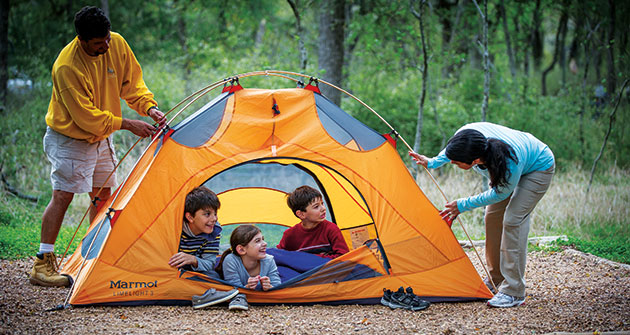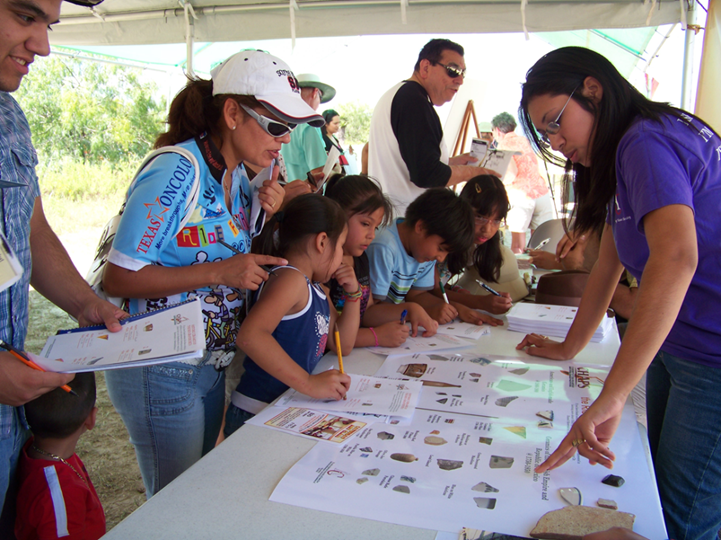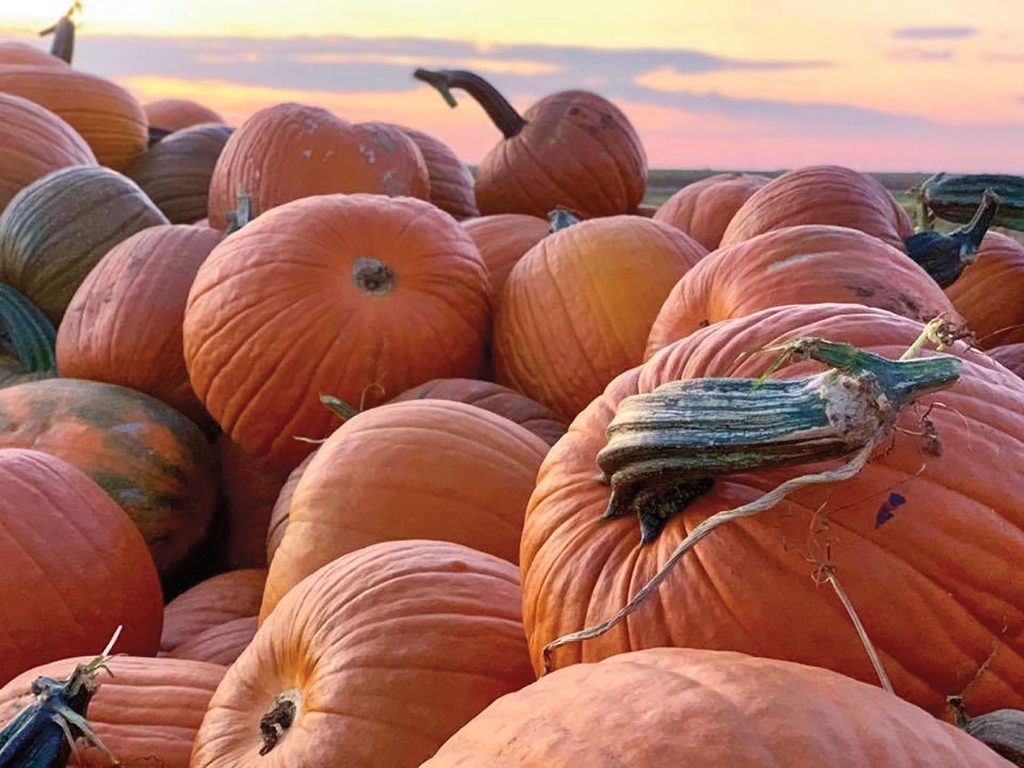
I’ve explored many remote locales across Texas, so most people assume that I’m a seasoned camper. But here’s the real story: The closest I usually come to camping involves listening to nature sounds from an app on my phone.
But recently, parental guilt over this camping ignorance began nagging at my husband and me. We had our excuses: We don’t have any equipment, we lack experience, we never learned proper outdoor survival skills. But our three kids, growing up within the concrete grid of a city, deserved to explore the great outdoors. So when we learned of an introductory camping program called Texas Outdoor Family, we knew that it was time to head for the woods.
Back in 2008, the Texas Parks and Wildlife Department introduced the Texas Outdoor Family program after a survey on state park usage revealed some alarming information. For instance, the average age of a state park visitor was 48, and fewer than a third of those visitors brought children along with them. Knowing that children hold the keys to future preservation of Texas’ natural habitats, TPWD created the program to teach camping skills to families. Most of the equipment—including a tent, cots, and cooking supplies—is provided, participants receive hands-on instruction, and rangers and volunteers stand by for support.
The workshops focus on different activities depending on the park’s natural resources; some locales include paddling instruction while others feature rock climbing.
These days, the program hosts around 80 camping workshops a year, with more than 15,000 campers as alumnae. The workshops focus on different activities depending on the park’s natural resources; some locales include paddling instruction while others feature rock climbing. We decide to attend a workshop at Glen Rose’s Dinosaur Valley State Park, thinking that searching for dinosaur tracks will add even more excitement to the adventure.
The park itself is beautiful: The Paluxy River cuts through limestone and sandstone cliffs, rolling grasslands sport blankets of wildflowers, and ashe juniper and live oak groves provide welcome shade. We soon find our base camp and connect with Ranger Cassie Cox, our leader for the weekend.
While the kids play outdoor games and learn how to identify poison ivy on a guided hike, Ranger Cassie leads the adults in acquiring fundamental camping skills like setting up a tent and operating a propane camp stove.
After setting up our campsite, we enjoy a quick picnic lunch before embarking on a geocaching workshop. Geocaching—a GPS-guided treasure-hunting game that has millions of fans worldwide—involves finding “treasures” hidden in outside “caches” by other players; if you take the treasure, you leave another in its spot. Volunteer instructors Corey and Teresa Davis explain geocaching strategy, rules, and etiquette, then hand each group a handheld GPS unit and send us on a hunt.
We’re moderately successful geocachers, finding multiple caches and trinkets hidden near trees and beside piles of rocks, and soon, it’s time to meet Ranger Kathy Lenz for a fossil workshop. She shows the kids a variety of fossils and gives geological detail on each. The group of youngsters breaks out in giggles after one kid licks a fossilized artifact and Ranger Kathy reveals, “You just licked dinosaur poop!”
Ranger Kathy then leads us on a hike across a shallow portion of the Paluxy, carefully navigating a series of stepping stones protruding from the water before coming to a cliff-shaded dry stretch of riverbed. Here, we see the tracks of Sauropod and Theropod dinosaurs, which roamed here 113 million years ago. The kids delight in fitting their hands inside the three-foot-wide Sau-ropod prints, which were discovered more than a century ago.
The kids splash in the river for a while before we hike back to camp for an outdoor cooking workshop. Ranger Cassie lights newspaper tinder under a coal-filled chimney, and we learn how to use a cast-iron Dutch oven to make a surprisingly delicious three-ingredient cake with orange soda, canned pineapple pie filling, and a white cake mix.
Then it’s time to branch out and cook on our own. Finessing the chimney proves a challenge, but we finally achieve smoldering coals. In the Dutch oven, we layer cornmeal batter over meat, tomatoes, and spices, and bake it over the coals, producing a delectable “chili pie.” For dessert, we pour brownie batter into a cast-iron skillet, which rests on a coal-fired grill. Topped with a gooey puddle of melted marshmallows and a sprinkling of graham cracker crumbs, our “s’mores brownie” makes a fine stand-in for the traditional campfire-roasted dessert.
After dinner, the rangers put on a Night Sounds program. The children try to identify various wildlife sounds as they become accustomed to nighttime in the forest. We don’t have any critters interrupt our sleep, but a surprise rain shower does. When my husband rushes outside to put up our rain canopy, he sees a volunteer biking to a single mom’s campsite to make sure her tent full of children is safe and dry.
The rangers and volunteers show our family the same dedication in helping us search for our son when he wanders too far from camp. We learn from their expertise throughout the weekend. With a little more practice, we’ll be ready to head out on our own when the mood strikes.








